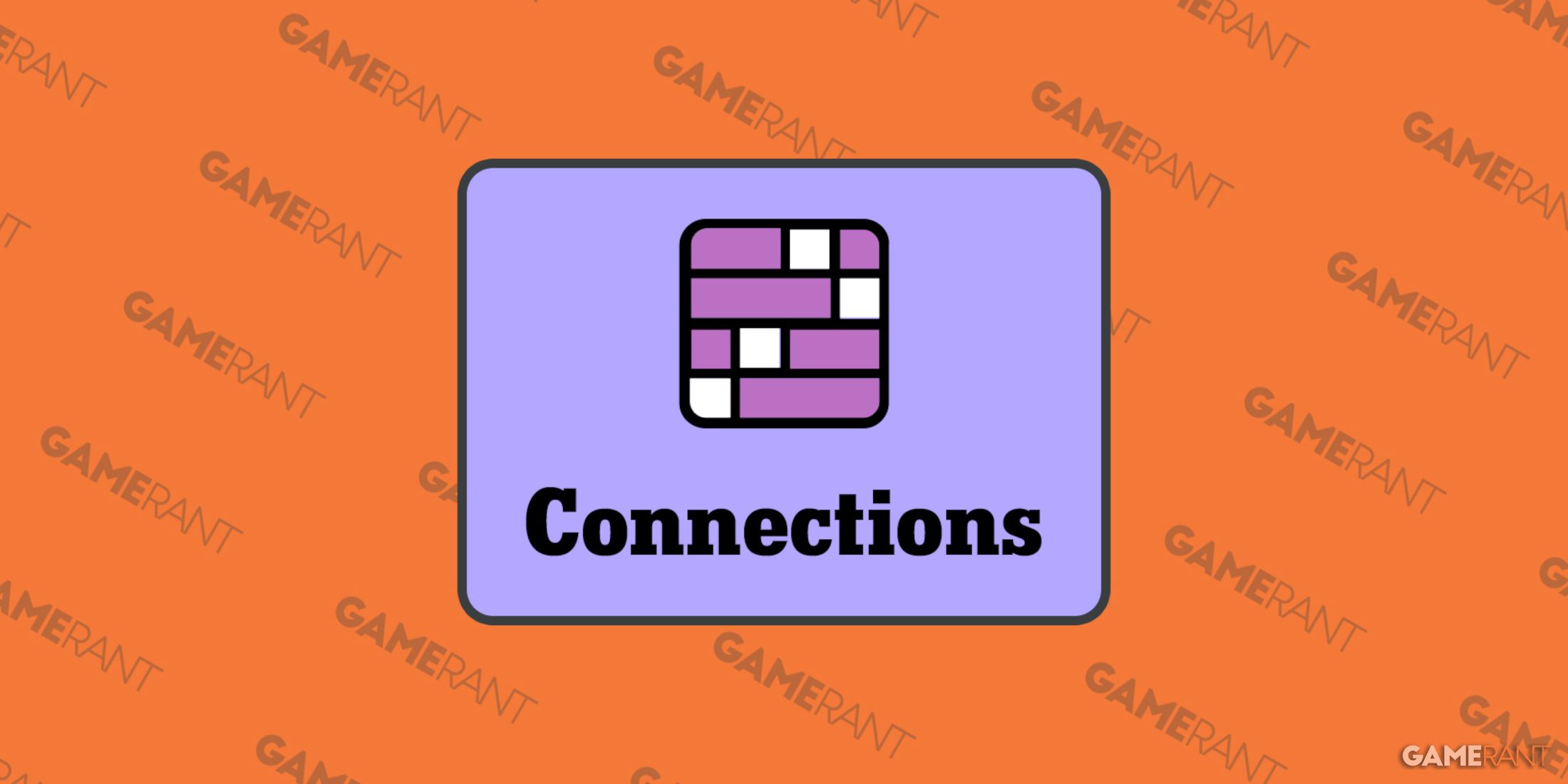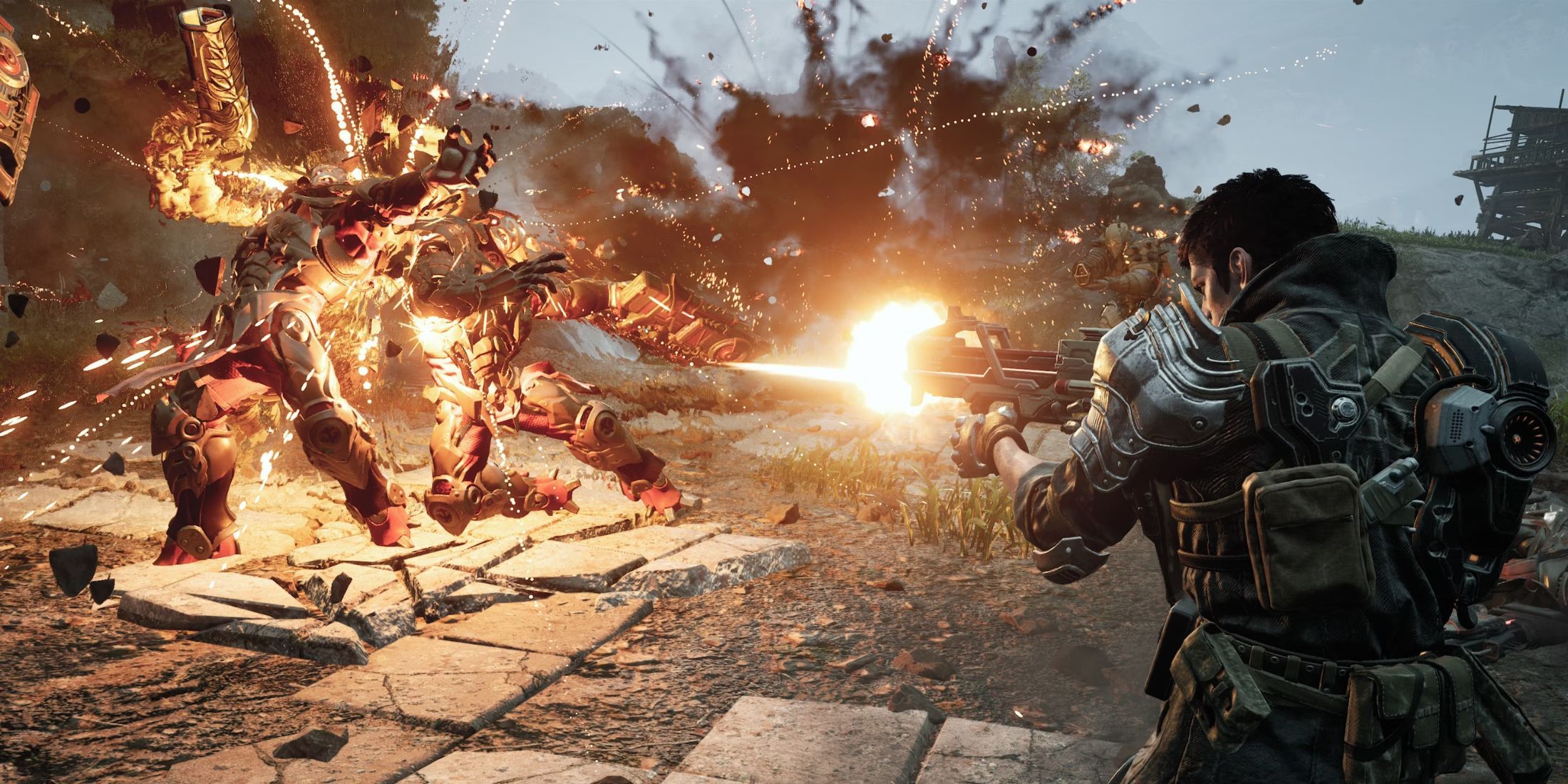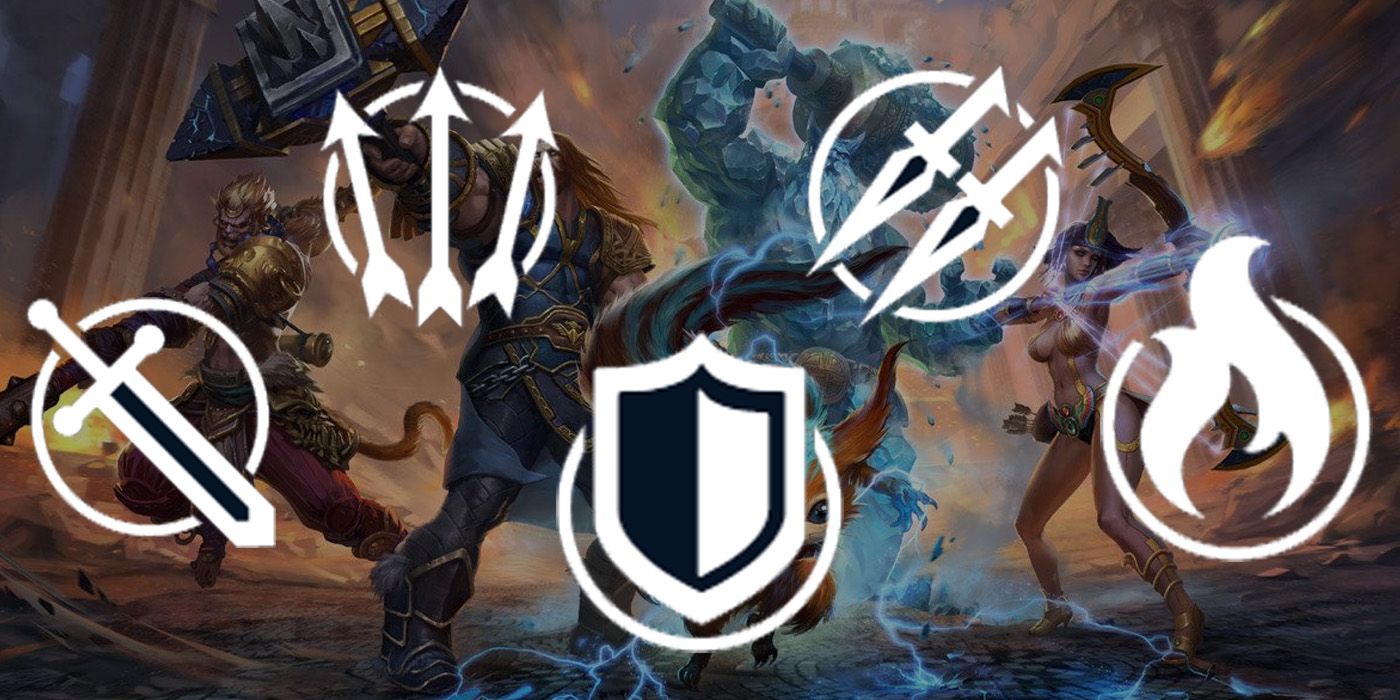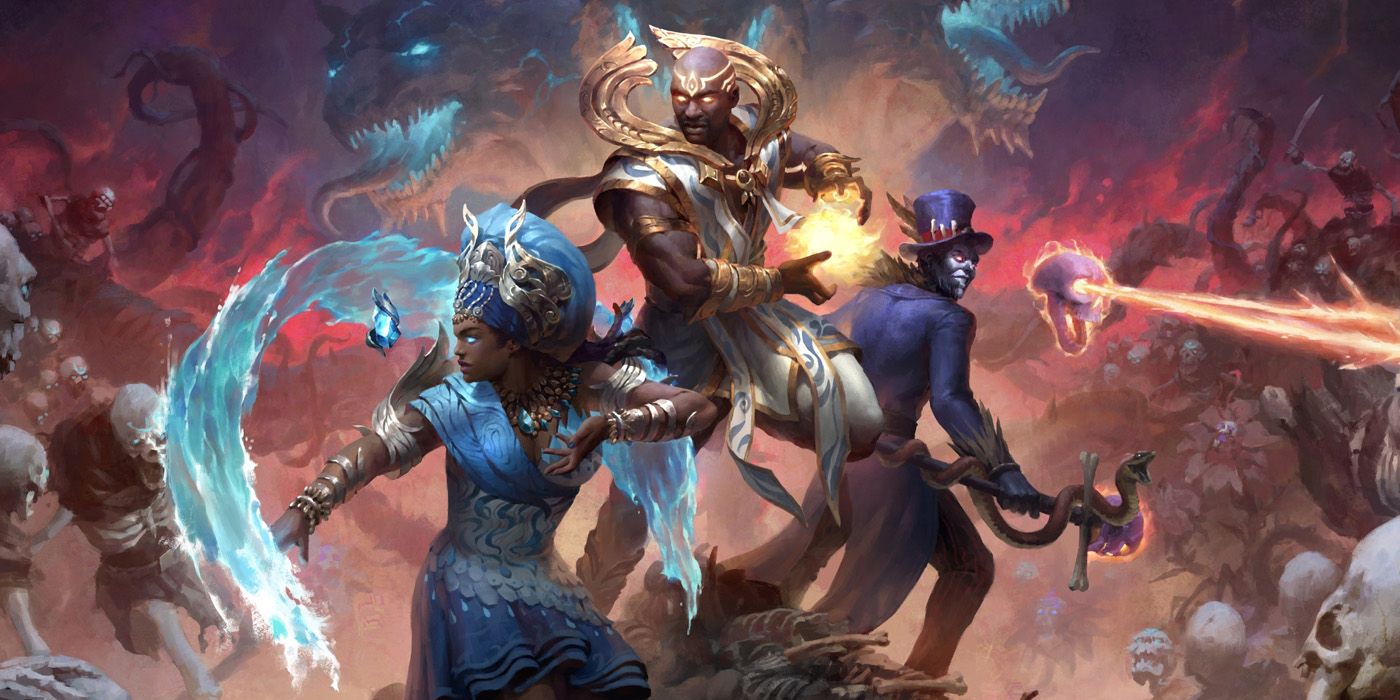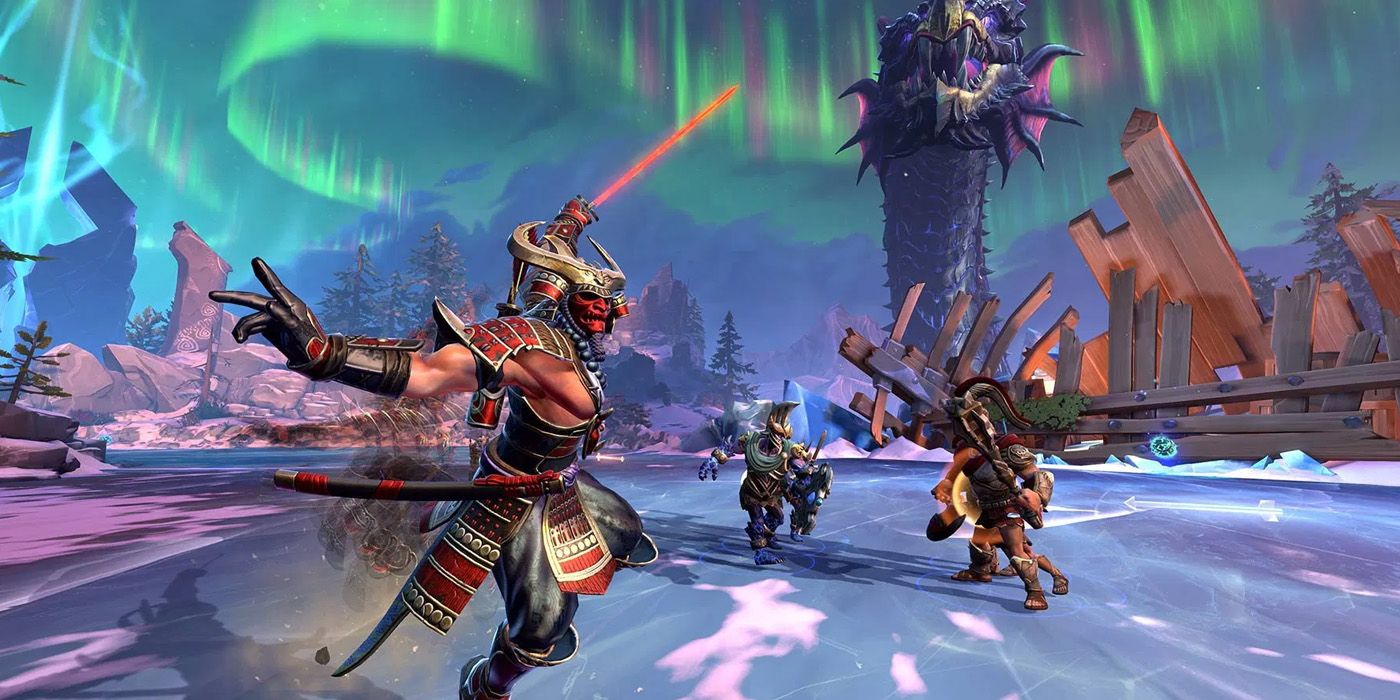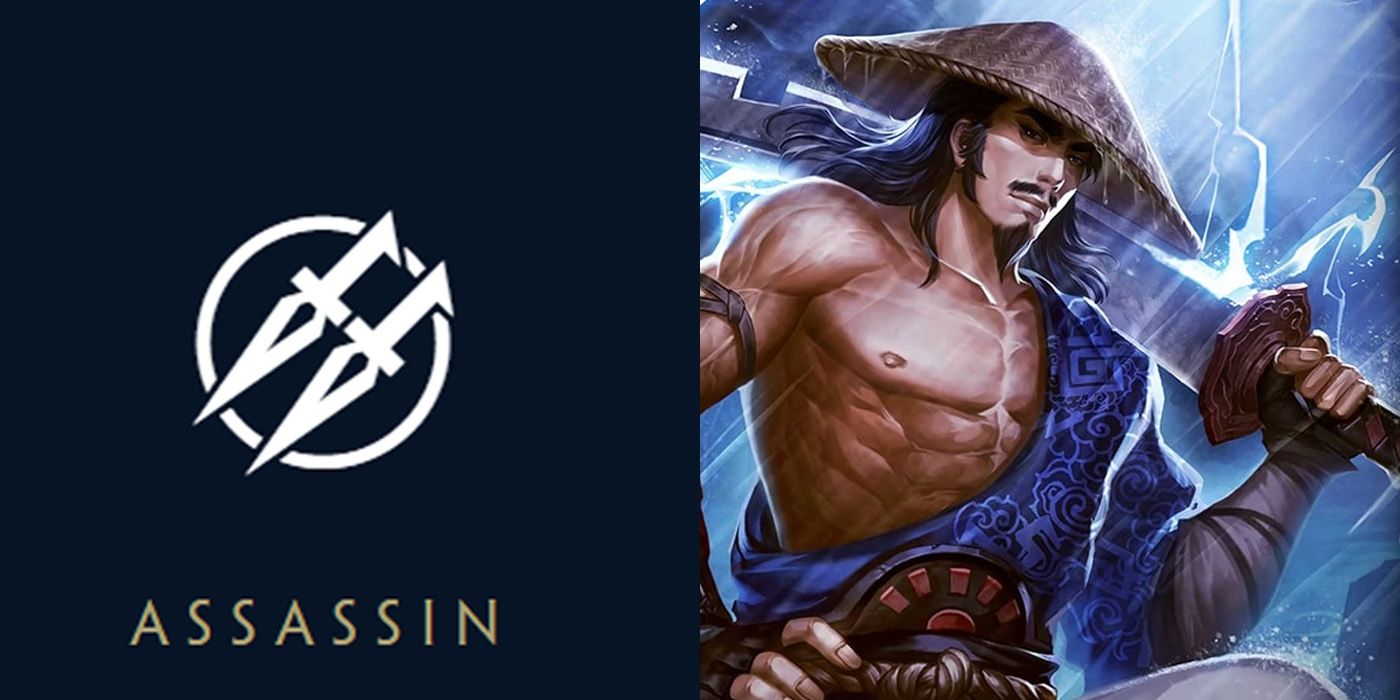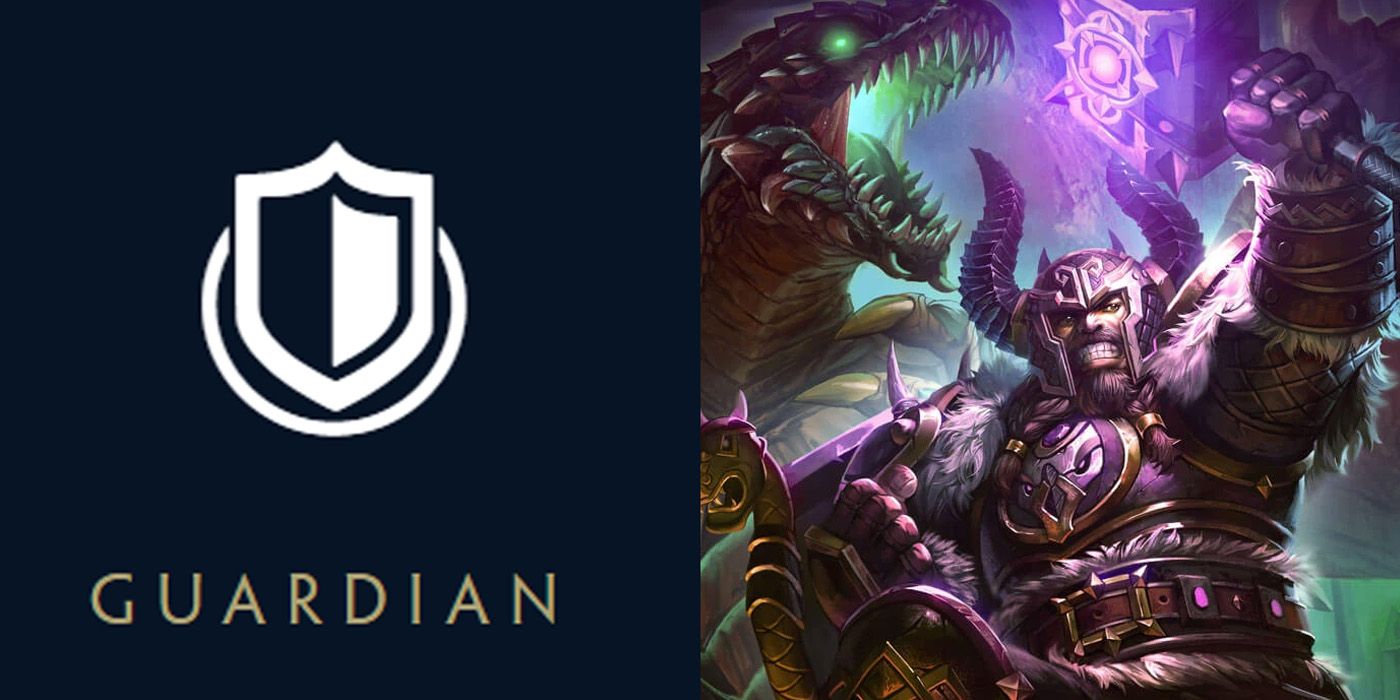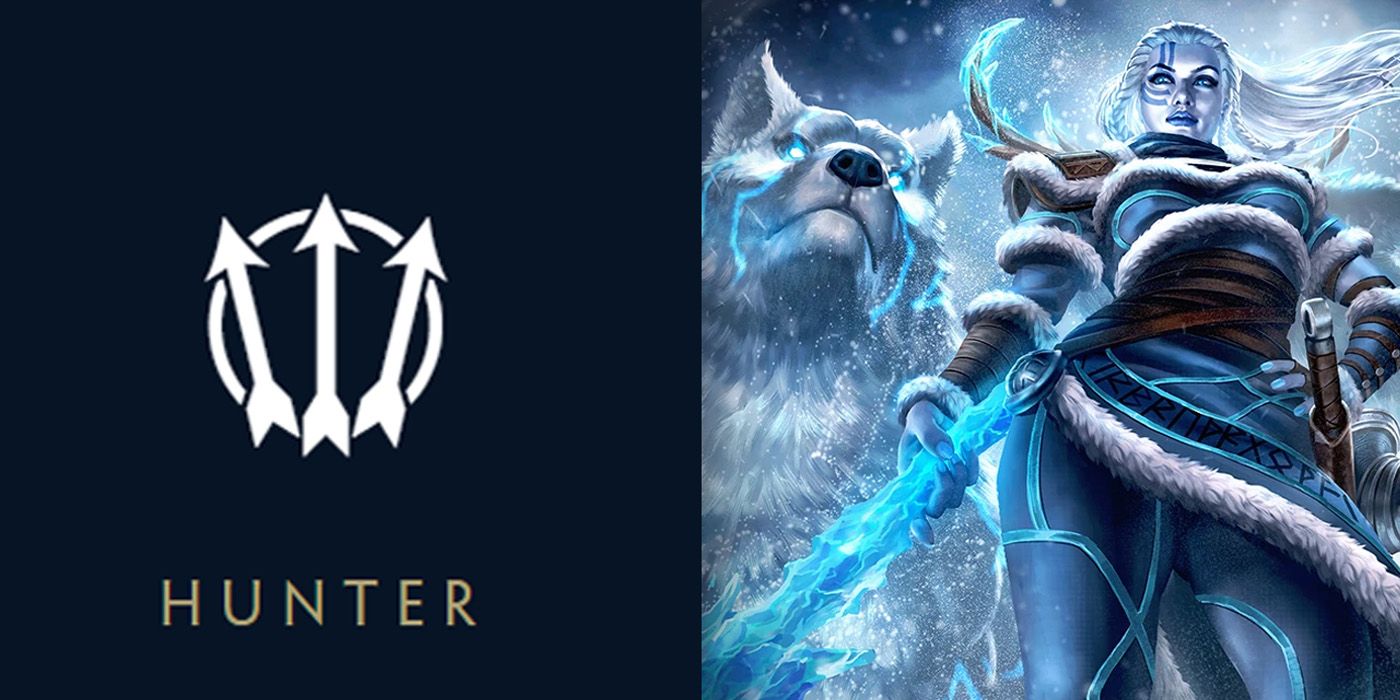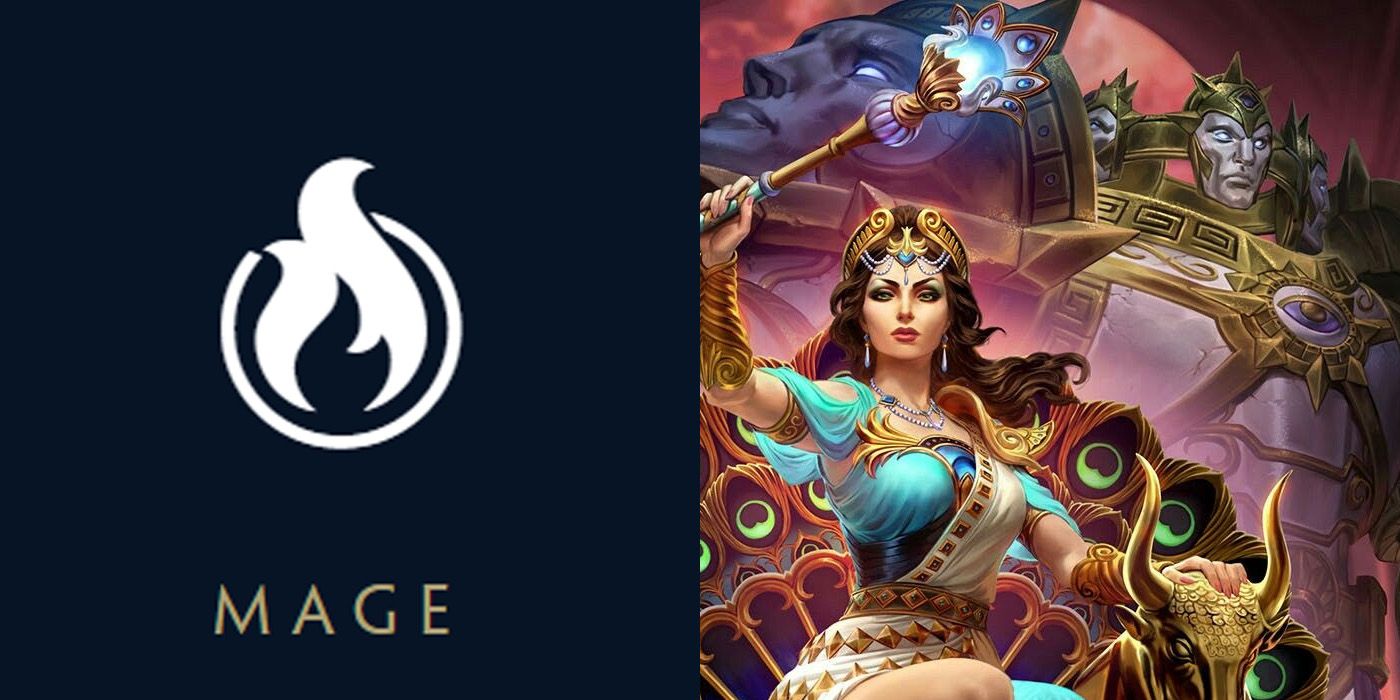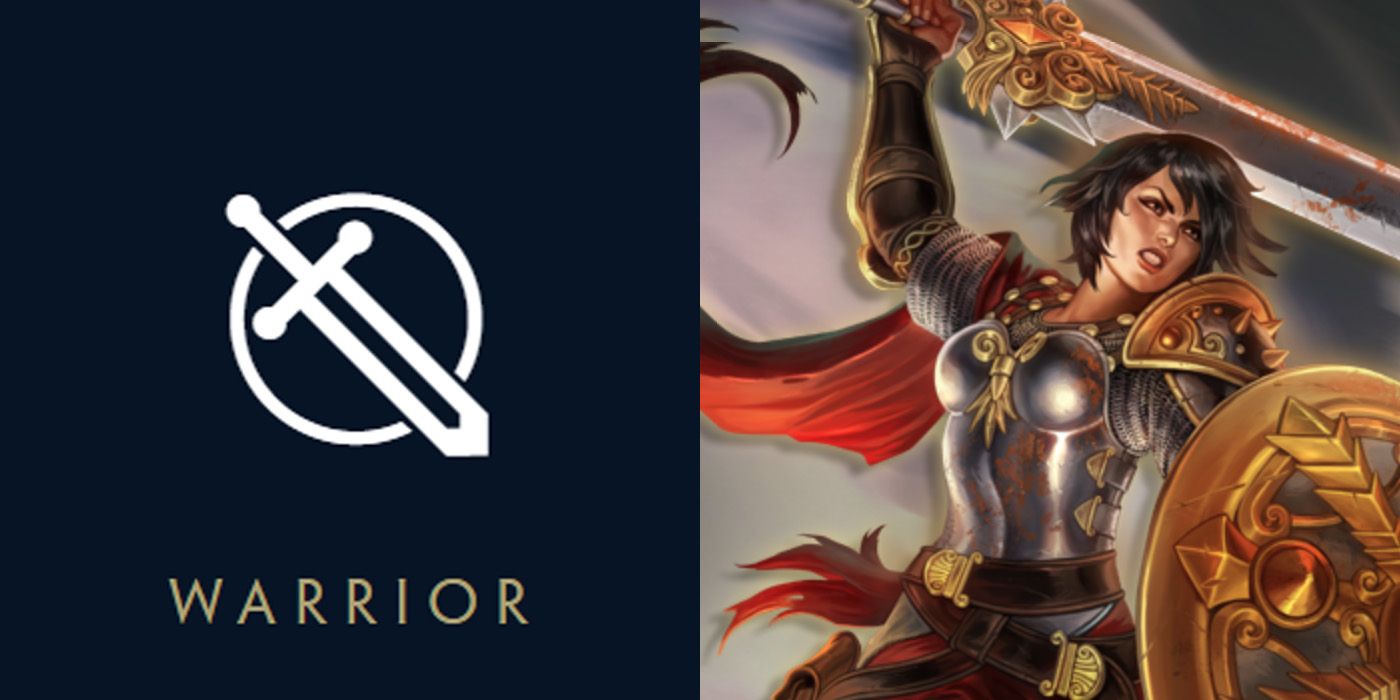Players who try Smite for the first time might realize that the Gods they choose actually fall under a particular Class. At first glance, players can quickly identify the main points that "determine" a God's particular Class. For instance, magic-oriented glass cannons usually fall under Mage. Meanwhile, tanks and initiators fall under Guardians, and melee fighters often become Warriors. In Hi-Rez's hit MOBA, knowing and understanding how to maximize these Class options can help a God reach its full potential.
Interestingly, the Class system also becomes a handy way to "divide" Smite's 130+ Gods. However, newcomers might feel slightly overwhelmed as to how these Class archetypes interact with the rest of the game - such as Roles inside game modes. Thankfully, a better understanding of a God's Class can help players get an easier understanding of a diety's core gameplay elements. Where should players begin, though?
The Class Archetype System
Despite not being an RPG, Smite's Class Archetype System does follow "trends" associated with these Classes as though they exist in other games. Essentially, a God's Class dictates at first glance how players should expect their core game mechanics to play out. Granted, each God has unique sets of abilities and even secondary resources. However, knowing their Class at least gives players an idea of where best to use or even train a particular God.
With this in mind, just how should players best approach the idea of Classes? First, it might help to give a quick rundown of what to expect from each particular Class Archetype:
Assassins: Anti-God, Speed, Mobility
Assassins like it fast and loose. Whereas other Gods have the means to last in team fights, Assassins work best by going in, killing a target, and moving away in a flash. Unlike other Classes, Assassins rely on auto-attacks with Physical Power to deal massive damage. However, Assassins often need the power of Jungle buffs to fully augment their abilities. Despite their massive damage output, Assassins tend to lack protections, making them a bit squishy when caught.
Guardians: Defense, Protect, Initiate
Guardians often rely on Magical Power to increase the strength of both their attacks and defenses. They can come in the form of Gods that offer melee ranged attacks. And while their overall damage output is lower than other Gods, they do have massive damage mitigation and crowd control potential. Unlike other Classes, Guardians often protect their teammates and initiate combat instead of becoming massive damage dealers.
Hunters: Distance, Damage, Carry
Hunters usually maximize their Physical Power to increase the potency of their ranged abilities and attacks. As with Assassins, Hunters rely on auto-attacks, with their abilities often boosting the chances of these basic attacks proccing various effects. As a result, strong Hunters tend to rely a lot on Items and builds.
Mages: Glass Cannons, AOE, Range
Mages more often than not utilize ranged attacks that get boosted with Magical Power. Most of their damage comes in the form of various offensive abilities that often secure high DPS. Their damage either wreaks havoc across a large area or across a massively short period of time. As a tradeoff, Mages tend to lack protections that help them withstand powerful abilities, which in turn forces Mages to be extra careful or at least come with backup.
Warriors: Offense, Attack, Engage
Warriors are as straightforward as they could be - they love using Physical Power to augment their melee attacks and abilities. They lack the punching power of Hunters and the defensive capabilities of Guardians. However, they do offer a healthy balance of these two characteristics that they often hold out on their own and perform decently in team fights.
What About Power?
Aside from Class Archetypes, players also need to take note of the kind of Power their Gods utilize. While not deeply tied into their Classes, knowing their God's Power allows them to have a general idea as to how their abilities interact with their nature as a member of a particular Class. Essentially, Power can be subdivided into two primary categories:
Physical Power: This kind of Power relies on melee attacks and abilities to trigger various abilities and benefits. Gods with Physical Power often rely on non-magical melee or ranged combat to build their strengths.
Magical Power: This kind of Power relies on magical attacks to activate various buffs and abilities. Gods with Magical Power rely on long-ranged spells and magical attacks to proc their skills.
Interestingly, Power also plays into secondary statistics that Class Archetypes can maximize depending on their effects and the benefits they provide. Each Power source plays into:
Lifesteal: This secondary statistic elaborates how a certain God can "steal" HP from opponents. Physical and Magical Lifestyle rely on non-magical and magical attacks to acquire lifesteal, respectively.
Penetration: This statistic declares just how much protections are ignored whenever a God tries to do damage. The higher the Penetration, the higher a God's chances of their attacks getting through. Physical and Magical Penetration talks about attacks being able to bypass physical and magical defenses, respectively.
Protection: This statistic helps identify just how much damage can a God withstand instead of simply taking an attack full force. Physical or Magical Protection helps shield Gods against non-magical and magical attacks and effects, respectively.
Assassins: Become A God-Killer
Assassins form the core foundation of Smite's version of a hard PVP environment. Unlike other Classes, Assassins specialize in abilities that allow them to constantly pursue enemies and punish them whenever they get near. As a result, Assassins tend to be some of the fastest Classes around - with abilities that further enhance their attack speed, chase enemies, or even incentivize extended battles with one opponent.
The Assassin Playbook
A lot of players consider the Assassin as one of the most complex Classes in Smite due to the level of battle awareness they demand from players. Interestingly, this caveat is due to the fact that players need to be exactly aware of who they're with and who they're fighting in a match. In turn, players who study how other Gods generally work can find weaknesses they exploit in the long run. Thankfully, players can develop better plays as an Assassin with some tips:
Study the enemy. Perhaps the best advice for new Assassins is to take time to study the enemy composition. For instance, identifying the enemy Assassin can help players stay aware of potential strategies they can use against their team. Likewise, players can identify strategies the opposing team might use that they can exploit.
Hit and run: Due to their lack of defenses, Assassins should always rely on speed to get their rotations in and get out fast. Thankfully, most Assassin Gods have abilities that help them build damage, attack speed, or movement speed the more they engage in battle. Gods like Loki excel in disappearing, which works great for surprise attacks that can kill escaping enemies.
Always have an exit. While they boast a lot of damage, Assassins don't enjoy a lot of defenses. In turn, being stuck in a fight will almost always get them killed. To solve this, players should always keep an exit strategy in mind whenever they engage in a team fight. Thor, for instance, has Mjolnir's Attunement (S1) that can work as a handy teleport or exit. Meanwhile, Nemesis has Swift Vengeance (S1) that can act as a dashing exit instead of a dash attack.
Never get greedy. A lot of Assassin players suffer from kill greed, especially if they want to ramp up that Deicide count. Unfortunately, a missed hit can easily set up Assassins for a counter-kill. Instead of focusing on pure damage, Assassins should make sure their hits always count. Why strive for the kill when allies can kill enemies after Assassins wipe out their defenses? Gods like Ne Zha have abilities that grant protection debuffs on her opponents. Sometimes, Assassins work best crippling an enemy's defenses instead of simply killing them.
How Do Assassins Work With Roles?
Most Assassins fall under the Jungle Role considering their knack for early-game damage. Due to the Assassin's reliance on attack speed and sheer attack power, they make great candidates to eliminate Elite monsters for buffs and even secure early-game ganks.
Who Are Great Assassins?
Assassins can be one of the most complex Classes to play, primarily because they work best when players know exactly when to chase buffs and chase enemy Gods. In turn, beginners should rely on Assassins that give them a lot of movement options to help them diversify their play. Here are some options for beginners:
Da Ji: The Nine-Tailed Fox remains a player's go-to choice for an Assassin that is perfect for stalking and chasing targets. Her Torture Blades (Passive) adds damage-over-time to foes in the form of bleed whenever she attacks. Meanwhile, Horrible Burns (S1) give her auto-attacks bonus damage while boosting speed. When surrounded, Da Ji can unleash One Thousand Cuts (S2) to attack everyone around her, yet again giving her movement speed. Moreover, her Trickster Spirit (S3) is a handy teleport she can use to go to an ally or an enemy. Lastly, Paolao (Ultimate) not only gives her a ranged attack, but she can also drag enemies to another location - perfect for setting-up team fights.
Thor: The Norse God of Thunder's bulky appearance hides the fact that he's one of the best pursuers in the game. His kit allows him to stay far away and still protect defenses, but at the same time have handy mobility abilities to get into the fight. Warrior's Madness (Passive) buffs Thor whenever he's near Gods, incentivizing battle. Mjolnir's Attunement (S1) not only gives Thor a ranged attack but also a handy teleport to let him engage in battle. If not, Tectonic Rift (S2) gives Thor a mean ranged attack to deter opponents. Berserker Barrage (S3) gives Thor a nifty AOE attack around him if he's surrounded. Lastly, his Anvil of Dawn (Ult) allows him to teleport a great distance away - great for escapes, aiding allies, or initiating combat.
Guardians: Dominate Defense
Guardians serve as Smite's frontline defenders and initiators. They serve as the equivalent of an MMO's tanks, and they dominate defense in both their damage mitigation and crowd control abilities. Due to these perks, players who use Guardians often protect damage dealers such as Hunters and Assassins. Likewise, they often protect their lanes from unnecessary infiltration and attacks. Despite their low damage output, Guardians remain important in any team composition for their ability to initiate fights and outlast all teams.
The Guardian Playbook
Thanks to their damage mitigation potential, Guardians often serve as front liners to the team. Essentially, teammates expect them to know when to start the battle and when to help others get out. Usually, Guardians serve as first in-last out. With the right build, Guardians can very well take the brunt of the enemy's damage. Likewise, they can boost their teammates to live longer in battle. Here are essential tips for Guardians:
Stay with damage dealers. As a tank, Guardians need to help damage dealers get fed as soon as possible. In turn, Guardians often assign themselves to protect Hunters and giving them the last kill. Likewise, Guardians should learn how to use their abilities to take on hits instead of their allies. That way, a Guardian's ally can get rid of threats while the Guardian distracts them.
Maximize ally support abilities. Most Guardians have a means of boosting the team's defenses or attack ability. These come in the form of an Item synergy or even ability. If possible, Guardians should always proc abilities that give defensive and offensive buffs to give the team an edge regardless of the enemy. For instance, Yemoja's Riptide (S3) knocks down enemies and gives her allies additional Protections and Movement Speed.
Get crowd control to stop enemy attacks. A lot of Guardians have the means to deter enemy attacks due to CC abilities. If timed properly, players can stop an enemy God from unleashing an Ult or a deadly attack. With this strategy, the team can easily secure kills as Gods can't proc their abilities in time. For instance, Ares's No Escape (Ult) stuns enemies and lets him drag them in a particular direction - mostly to his allies.
How Do Guardians Work With Roles?
Most Guardians get assigned to the Support Role, more or less serving as the primary defensive component of the Duo Lane. Alongside the Carry, the Guardian's buffs and defensive capabilities make them the perfect bodyguards for Hunters who need to get fed as soon as possible.
Who Are Great Guardians?
Players new to the Guardian Class should rely on Gods that can tank damage despite having low damage numbers - giving players room to explore engagement opportunities while still punishing the enemy. As Guardians, players should go with Gods that provide excellent crowd control measures alongside handy buffs for teammates. Here are some reliable Guardians:
Ares: The Greek God of War is possibly one of the safest choices for Guardians, especially for newcomers. When leveled properly, Ares can become an extremely-difficult God to kill, and his crowd control abilities make him an annoying God to deal with. His Shackles (S1) not only constrict opponents by slowing them down, but it also gives Ares a mean buff. When with teammates, his Bolster Defenses (S2) can greatly encourage allies by buffing their defenses. Searing Flesh (S3) gives Ares a damage-over-time ability that makes him immune to knockbacks. Most annoyingly of all, his No Escape (Ult) allows Ares to drag unfortunate enemies close to him to wherever he wishes.
Jormungandr: The World Serpent isn't just a mean Guardian to mess with, it's also a massive serpent - so it's a win-win for players who want a menacing Guardian. Unlike tanky Guardians that buff allies, Jormungandr has a more straightforward approach: just pummel the threats to death. Jormungandr's Immovable (Passive) makes him immune to hard displacement at the cost of a manageable setback. Meanwhile, its other abilities deal damage to opponents at a distance (Venomous Haze, S1) or around it (Consuming Bellow, S2). Jormungandr can even stalk prey from underground with Submerge (S3), and even protect targets as a huge monster with The World Serpent (ULt).
Hunters: Secure Range
Hunters in Smite deal some of the highest numbers in terms of damage in any match. Unlike target-focused Assassins, Hunters remain ever-reliable in terms of dealing as much damage as possible. However, Hunters do seem slow on the uptake, especially due to their need to farm in the early game. Essentially, players who want to use Hunters need to have a great understanding of both Smite's Jungle camps and the aiming system.
The Hunter Playbook
Hunters deal some of the best damage numbers in the entirety of Smite. However, new players might face difficulties maximizing their Hunters for both simple and complex reasons. Essentially, new Hunters should find ways to maximize their basic attacks and practice timing with their ability-based damage. Moreover, Hunters should slowly train on how to make even Smite's interface work in their favor. Here are some other tips:
Aim sensitivity guarantees precision. Players who want to play Hunters should never underestimate aim sensitivity. Thanks to aim sensitivity, a Hunter can aim down sights much faster and more efficiently. Players should constantly tinker with this to find the right settings that will secure the best aim for them.
Never forget the map. Of all the roles, perhaps the Hunter needs to study the map the most. As the Carry, Hunters need to maximize their opportunities to take on Jungle to increase their damage output. Likewise, Hunters need to find the fastest way to level up to complete their build. Sometimes, Hunters can also use the map to trap unsuspecting enemies. For instance, Artemis has Transgressor's Fate (S1) that can root opponents - leaving them open for a nasty attack.
Build damage as soon as possible. Hunters should maximize their ability and Item synergies to build damage over time as soon as possible. Thanks to high damage output, a Hunter can still give off significant damage to enemies while tank teammates finish the fight. Likewise, Hunters that maximize their damage output can make a big difference in team fights or even defending lanes. For instance, Neith's Broken Weaves (Passive) lets her build massive damage provided she does her combos properly.
How Do Hunters Work With Roles?
Most Hunters get assigned to the Carry Role thanks to their sheer damage potential. Despite needing constant feeding, their builds help Hunters secure devastating late-game kills that scale as far back as early-game with the right assistance.
Who Are Great Hunters?
Players new to the Hunter Class won't go wrong with Gods that offer a straightforward way of accumulating high damage numbers with a healthy host of utility abilities. As Hunters, it's preferred for players to have easy access to damage boosters while still being able to retreat at the right moment. In this regard, these Gods might be great go-to's:
Apollo: The Greek God of Music lives up to his role by adding style to his battle tactics. Unlike other Hunters, Apollo has one of the best mobility-focused kits in the game. His Passive gives him a constant attack speed boost provided he always has something to attack. Moreover, his other abilities have the means to stun enemies for a short duration alongside a protection boost (Serenade, S2) or a movement boost (The Moves, S3). His Ult (Across The Sky) can become a great way to enter the battlefield while damaging opponents, chasing escaping foes, or even make a quick exit.
Neith: The Egyptian Goddess holds the title Weaver of Fate for a reason. Unlike other Hunters, Neith has an extremely straightforward kit that incentivizes battlefield exposure via her Broken Weaves Passive. Most of her other skills receive massive damage boosts whenever hitting an area with a Broken Weave. This Passive gives players plenty of reasons to constantly engage enemies from afar. Her Back Flip (S3) gives Neith a handy way to escape the battle and leave a Broken Weave from her original location, opening enemies for a neat counter-attack.
Mages: Absolute Destruction
Mages cause some of the flashiest battle effects in Smite. However, unfortunate enemies do suffer inside any Mage's rather colorful abilities. Despite their frail nature, Mages deal absolute hell in the right hands. Thankfully, Mages serve as one of the much easier classes to learn due to their range-reliant nature. However, beginners who start grasping the Mage's core abilities can deal massive damage in both team fights and basic skirmishes.
The Mage Playbook
Despite being glass cannons, Mages still dish out some of the best AOE damage in the game. Essentially, players who want to try Mages should capitalize on their ranged attacks and crowd control to pester with enemy lines. Moreover, a Mage's dynamic kit allows players to experiment with various playstyles. Mages can try a variety of approaches in battle:
Get a combo running. In team fights, Mages add pressure against opponents via devastating AOE attacks. Granted, most Mage attacks deal decent damage against opponents. However, Mages can maximize their support by amping up their combo chain. In turn, new Mages should capitalize on their rotations to deal as much damage to enemies as possible so Hunters and Assassins can finish them off. For instance, players can make a mean Mage with Ra thanks to his powerful linear-based attacks.
Maximize crowd control abilities. A lot of Mages come equipped with crowd control abilities that can mess with an enemy team. Sometimes, a few seconds of stun or knockback can make a huge difference in battle. In turn, Mages should master not just their damage-dealers, but their CCs as well. For instance, Hera's Polymorph (S2) can transform enemies into a monster for a few seconds. However, these "few seconds" means an opponent who can't use any skills for that period of time. A well-timed Assassin or Hunter attack can finish this enemy with just a Mage's CC.
Retreat if needed. A lot of Mages tend to get overconfident in battles due to their AOE - but this usually costs them their life. Remember, Mages don't have a lot of protections and HP. In turn, Mages should learn how to retreat if necessary. Relics such as Aegis can provide a few seconds that Mages can use to run away and heal at the base. These few seconds of running away can serve the party better instead of an entire minute waiting to respawn.
How Do Mages Work With Roles?
Most Mages get assigned to the Mid Lane Role considering their AOE potential. As the Mid Lane lies smack in the middle of Jungle territory, the Mage's huge damage output can make them perfect defenders of obvious enemy assaults. Despite the Mage's fragile nature, their position in Mid allows roaming team members to assist them should the need arise.
Who Are Great Mages?
Unlike other Classes, Mages are perhaps some of the most flexible Classes to play. Its roster of Gods has unique gameplay elements that make them quite efficient to defend lanes alone or alongside other Gods. In turn, the best Mages for newcomers should have kits that are easy-to-learn but offer quite a dynamic approach to gameplay. Here are some examples:
Hera: The Greeks' Queen of the Gods makes for a unique Mage as her kit relies on setting her up for a minion in the form of Argus, her protector. In turn, her kit relies on proccing Commanding Presence (Passive) that decreases Argus's CD as fast as possible. Her Royal Assault (S1) gives her the means to poke Gods and hinder minion assaults with a long-ranged attack. Alternatively, Polymorph (S2) enables Hera to transform Gods into a monster for a short while and hinder their abilities. Her Divine Shroud (S3) gives her a temporary shield. Lastly, Argus, the Defender (Ult) allows Hera to summon her loyal Guardian and fight on her behalf. Thanks to these abilities, Hera can even double as a Guardian with the right build.
Thoth: The Egyptian's Arbiter of the Damned is more of a sharpshooter than a Mage, as his abilities rely on continuously enhancing his attacks. His Dead Reckoning (Passive) grows Thoth's Magical Penetration. Meanwhile, Hieroglyphic Assault (S1) allows some basic attacks to pass through enemies and deal more damage. His Evade and Punish (S2) give Thoth a handy escape mechanic and counter-attack. Moreover, his Glyph of Pain (S3) gives his ability a range and damage boost provided the attacks pass through it. Lastly, Final Judgment (Ult) gives Thoth a massive attack that can easily decimate foes. Thanks to his kit, players can build Thoth like a Hunter with the right Items.
Warriors: Boost Aggression
Warriors serve as some of the most balanced Gods in the entirety of Smite. Their middling damage and defenses allow them to fend off incoming threats. However, well-built Warriors can deal massive damage in team fights with the right build. Thanks to their flexibility, players can build Warriors into defensive support units or hard-hitting fighters. As such, players who plan on using Warriors should take note of how to enter and exit engagements in a strategic manner.
The Warrior Playbook
Thanks to their balanced builds, Warriors can stay on lanes or even engage in team fights. In turn, the best Warriors don't necessarily rely on pure damage or pure defense alone. Rather, great players use Warriors to aid in fights but not necessarily finish them. Unlike hyper-damage Assassins and Hunters, Warriors only deal decent damage. Likewise, they can't tank as hard as Guardians. Players can achieve this kind of balance with these tips:
Get into combat intelligently. Despite their head-on nature, Warriors should consider how they enter combat. If possible, Warriors should maximize their abilities to enter a fight with impact but still last long enough to fight. For instance, Nike's Valient Leap (S3) incentivizes starting team fights. However, her other abilities do grant her protections and shields. Warriors with defensive abilities should use them to outlast enemies, and to make room for their exit.
Maximize participation in engagements. Warriors should maximize their participation in fights as much as possible. To do this, Warriors should capitalize on their combos to deal as much damage as possible in combat. If they get in a fight, they need to get their rotations right to deal decent damage. For instance, Bellona's abilities always encourage her to get into fights. However, her Master of War (Passive) and Eagle's Rally (Ult) allows her to maximize her melee incursions with combat buffs.
Prepare an exit. Warriors who engage in combat will likely die due to too much damage. However, players who play Warriors shouldn't always make the hero's sacrifice. It's better if they can exit immediately right after dishing a rotation or two. That way, Warriors can resume protecting an objective - or even steal a Tower or two if everyone is focused in fights. Warriors with great exits include Guan Yu with his Cavalry Charge (Ult), which serves as a great way to roam around.
How Do Warriors Work With Roles?
Most Warriors fall under the Solo Lane Role due to their fairly-balanced builds. Unlike other Classes, Warriors usually have a decent defense and still pack a punch. In turn, their abilities serve as great deterrents for the assault of other melee-based Gods. If assigned to the rather-straightforward Solo Lane, Warriors can deter most assaults from Gods without having to call for assistance.
Who Are Great Warriors?
Warriors offer a healthy balance between attack and defense. In turn, these elements making them a great starting Class for most players who want to engage in combat. In turn, players should choose Warriors with a fairly straightforward kit that has room for flexibility as they grow in skill level. Here are examples of Warriors that are perfect for beginners:
Amaterasu: The Shining Light of the Japanese Pantheon can pack a punch while holding off on her own just fine. Amaterasu's Illuminating Strike (Passive) constantly weakens an opponent the more she hits her. Her Divine Presence (S1) also continuously gives her an option to alternate between a constant speed or attack buff - perfect for situational encounters. Moreover, her Heavenly Reflection (S2) gives her a handy shield and a ranged counter-attack that allows her to keep her distance. Countering this is Glorious Charge (S3), a dash ability for pursuits. Lastly, her Dazzling Offensive (Ult) caps her versatile kit with a three-slash combo. Thanks to her multi-range kit, Amaterasu can double as a Guardian.
Guan Yu: The fabled Saint of War enhances his battle prowess the more he stays in combat. Guan Yu's Painless (Passive) enhances his abilities the more he takes or deals damage. Moreover, Conviction (S1) gives Guan Yu and his allies a handy heal and CD reduction. Meanwhile, Warrior's Will (S2) gives Guan Yu a dash he can always use to engage. Meanwhile, Taolu Assault (S3) lets Guan Yu attack foes around him. Lastly, Cavalry Charge (Ult) gives Guan Yu his warhorse and allows him to roam the battlefield - perfect for changing lanes and defenses. Unlike Amaterasu, Guan Yu can become a mean Guardian.


